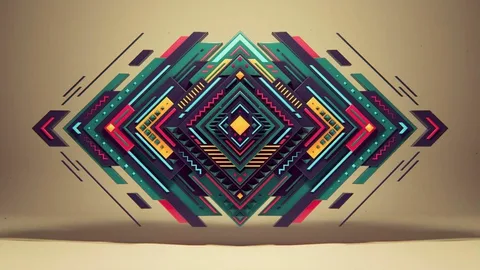The Evolution and Impact of Digital Design

Introduction
In the age of technology, digital design has become an integral part of our daily lives, shaping how we interact with the world around us. From websites and apps to branding and advertising, digital design influences our experiences and perceptions. This article explores the evolution, key elements, and future trends of digital design.
A Brief History of Digital Design
The Early Days
Digital design began in the 1960s with the advent of computer graphics. Pioneers like Ivan Sutherland created groundbreaking work with Sketchpad, which allowed users to interact with graphics on a screen. As personal computers became more accessible in the 1980s, software like Adobe Photoshop and Illustrator revolutionized design processes, enabling artists to create intricate digital works.
The Rise of the Internet
The 1990s brought about the explosion of the internet, creating a new frontier for digital design. Web design emerged as a distinct discipline, emphasizing usability and aesthetics. Designers faced the challenge of creating engaging experiences while considering different browsers and screen resolutions. The introduction of HTML and CSS laid the groundwork for structured, visually appealing websites.
The Mobile Revolution
With the advent of smartphones in the late 2000s, digital design evolved again. Designers had to rethink their approaches to accommodate smaller screens and touch interfaces. Responsive design became crucial, ensuring websites looked good on all devices. User experience (UX) design gained prominence, focusing on how users interact with digital products.
Key Elements of Digital Design
1. User Experience (UX) Design
At the heart of digital design is the user experience. UX design focuses on optimizing how users interact with a product, ensuring it's intuitive and enjoyable. This involves user research, wireframing, prototyping, and usability testing. A well-designed UX leads to higher user satisfaction and retention.
2. User Interface (UI) Design
UI design complements UX by concentrating on the visual aspects of a product. This includes layout, color schemes, typography, and interactive elements. Effective UI design enhances usability while establishing a brand's identity.
3. Visual Design
Visual design encompasses the aesthetics of a digital product. It involves creating engaging graphics, animations, and imagery that resonate with users. Strong visual design can evoke emotions and drive engagement, making it a critical component of digital marketing.
4. Interaction Design
Interaction design focuses on how users interact with a product. It considers elements like buttons, gestures, and animations. A seamless interaction design enhances the overall user experience, making digital products feel more intuitive.
The Role of Technology in Digital Design
Design Software
The evolution of design software has significantly impacted digital design. Tools like Figma, Sketch, and Adobe XD have streamlined the design process, allowing for real-time collaboration and iteration. These advancements empower designers to create more innovative and complex products.
Artificial Intelligence
AI is increasingly shaping digital design, offering tools for automating tasks, personalizing user experiences, and generating design elements. AI-driven analytics help designers understand user behavior, leading to more data-informed design decisions.
Future Trends in Digital Design
1. Augmented Reality (AR) and Virtual Reality (VR)
As AR and VR technologies mature, they are poised to redefine digital design. Designers will need to create immersive experiences that engage users in entirely new ways, from virtual try-ons to interactive storytelling.
2. Voice User Interface (VUI)
With the rise of voice-activated devices, VUI design is becoming essential. Designers must consider how users interact with products through voice commands, creating intuitive and accessible experiences.
3. Sustainability in Design
As awareness of environmental issues grows, sustainable design practices are becoming more prominent. Designers are exploring eco-friendly materials and methods, considering the life cycle of digital products, and promoting social responsibility.
4. Personalization
Personalized experiences will continue to be a significant trend. Leveraging data and AI, designers can create tailored interfaces that meet individual user needs, enhancing engagement and satisfaction.
Conclusion
Digital design has come a long way since its inception, continually evolving to meet the needs of users and technological advancements. As we look to the future, the focus on user experience, innovative technologies, and sustainable practices will shape the next generation of digital design. By embracing these trends, designers can create impactful and engaging experiences that resonate with users in an increasingly digital world.
- Arts
- Business
- Computers
- Jogos
- Health
- Início
- Kids and Teens
- Money
- News
- Recreation
- Reference
- Regional
- Science
- Shopping
- Society
- Sports
- Бизнес
- Деньги
- Дом
- Досуг
- Здоровье
- Игры
- Искусство
- Источники информации
- Компьютеры
- Наука
- Новости и СМИ
- Общество
- Покупки
- Спорт
- Страны и регионы
- World


